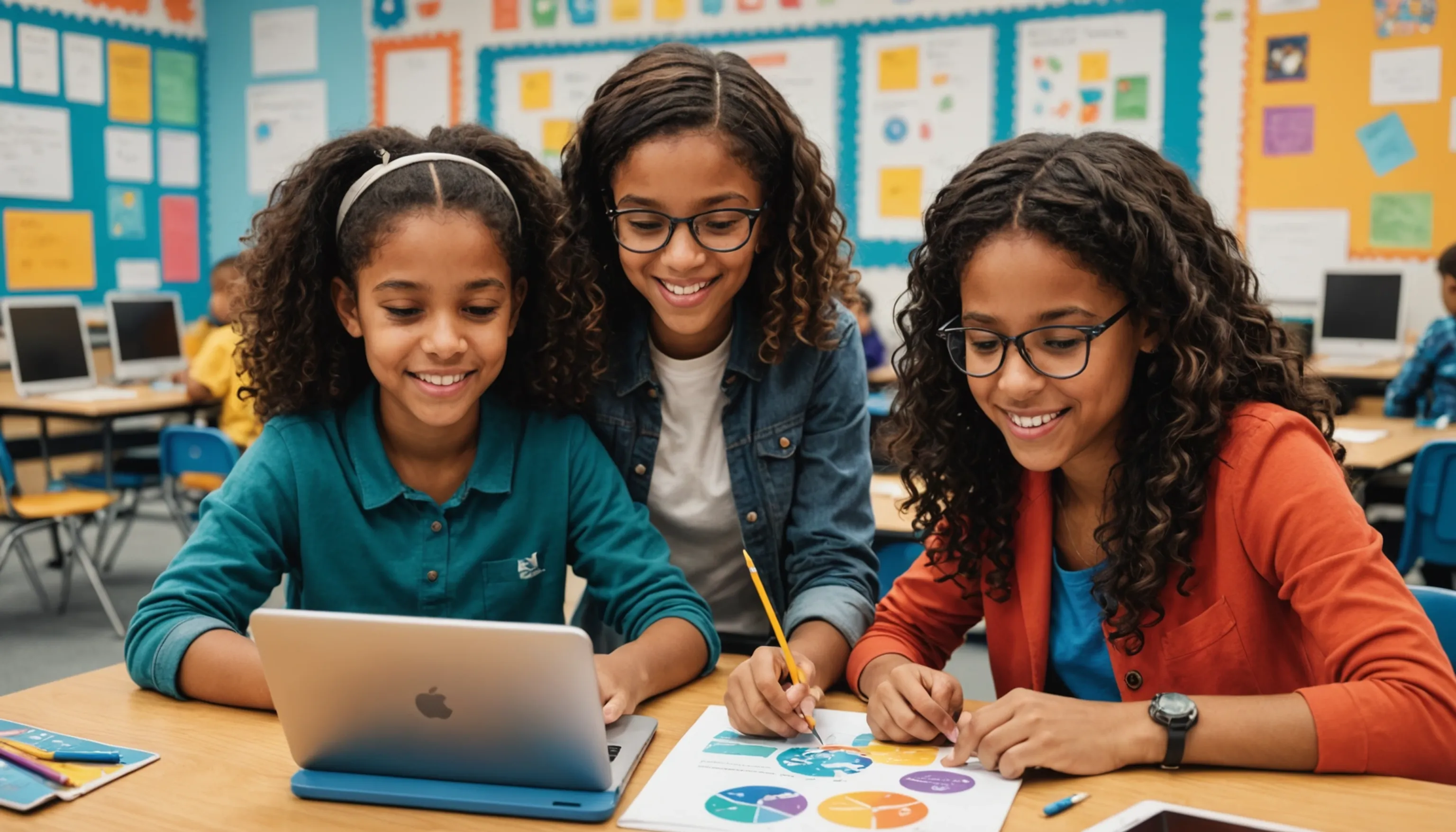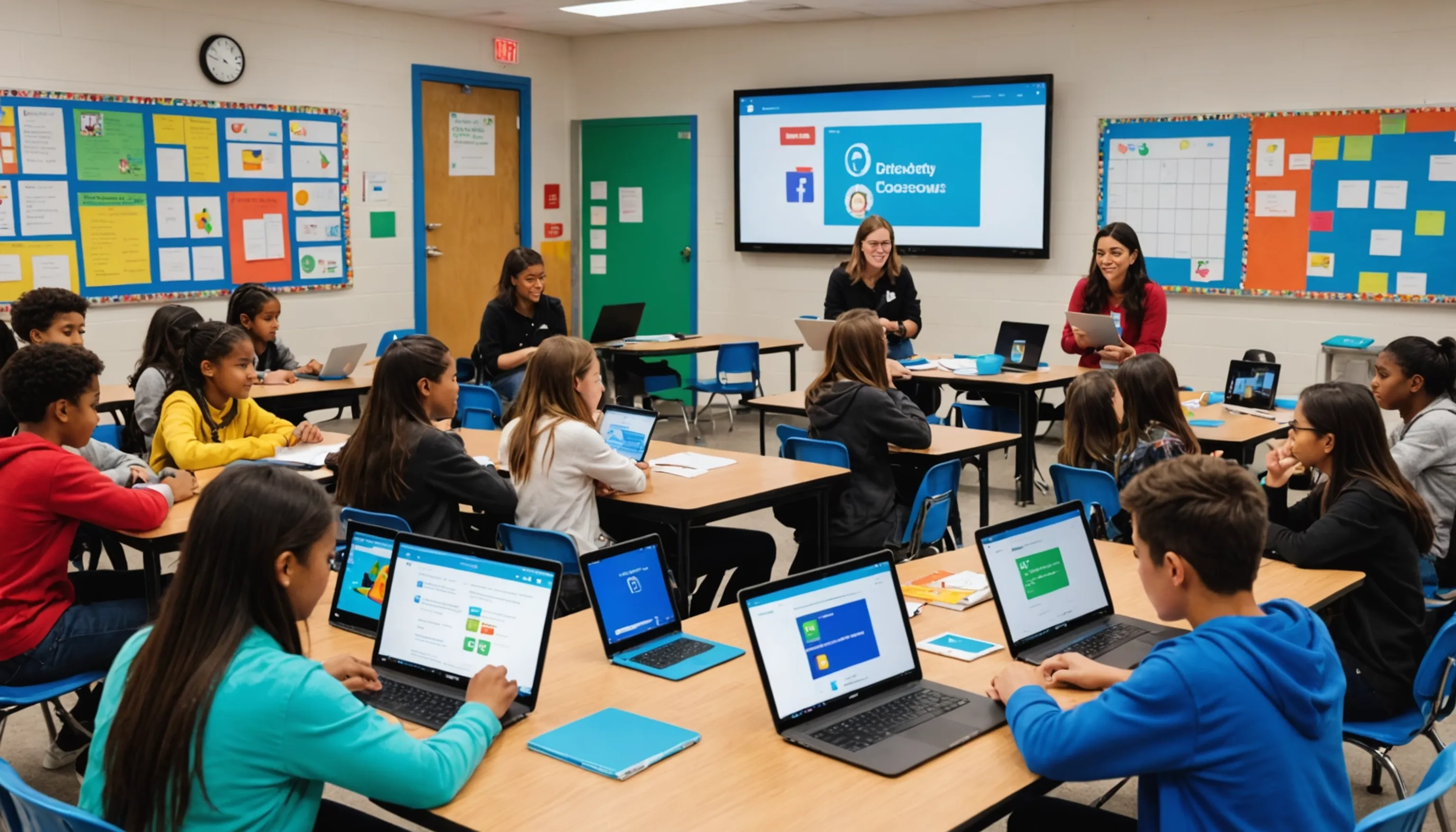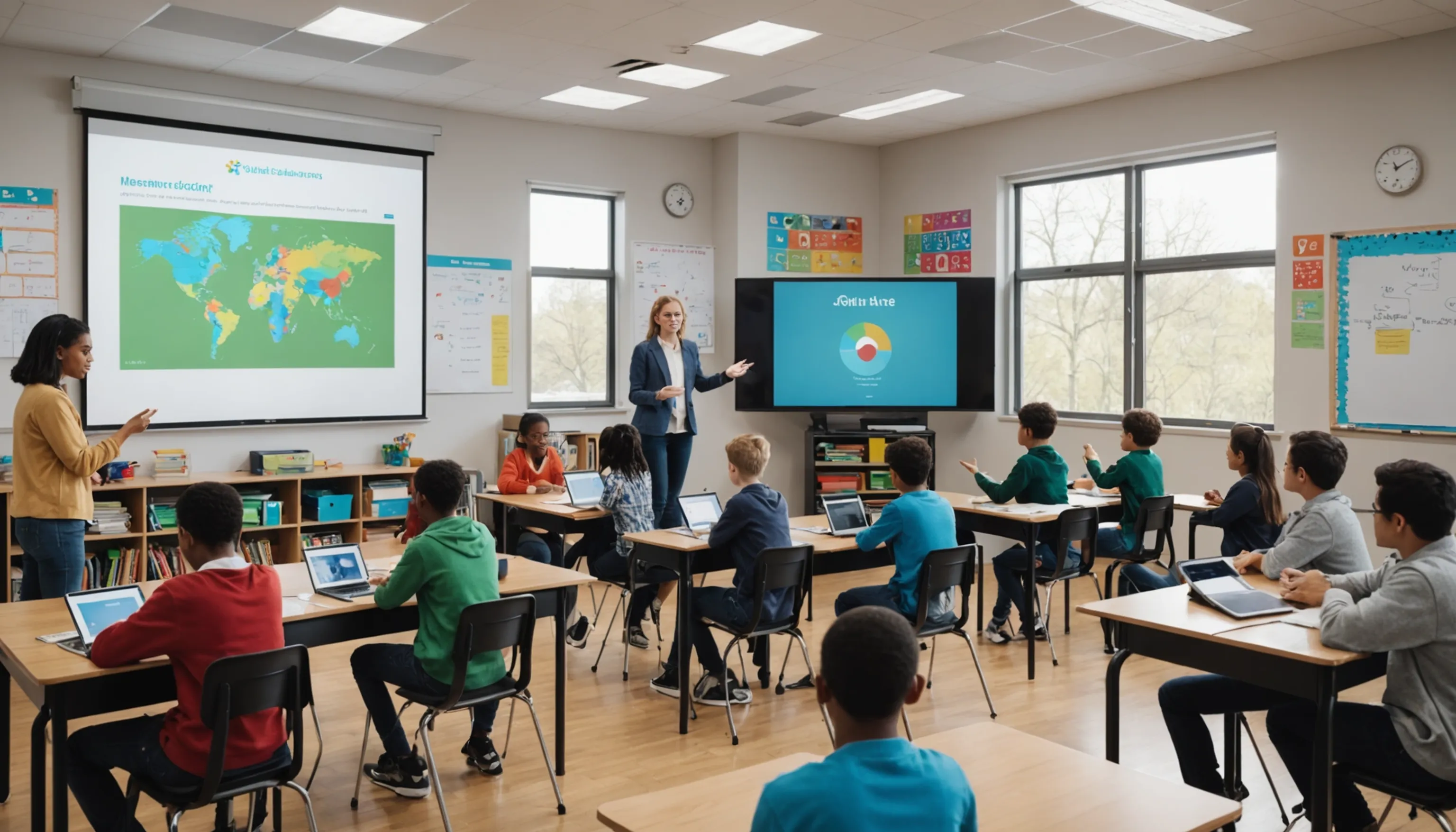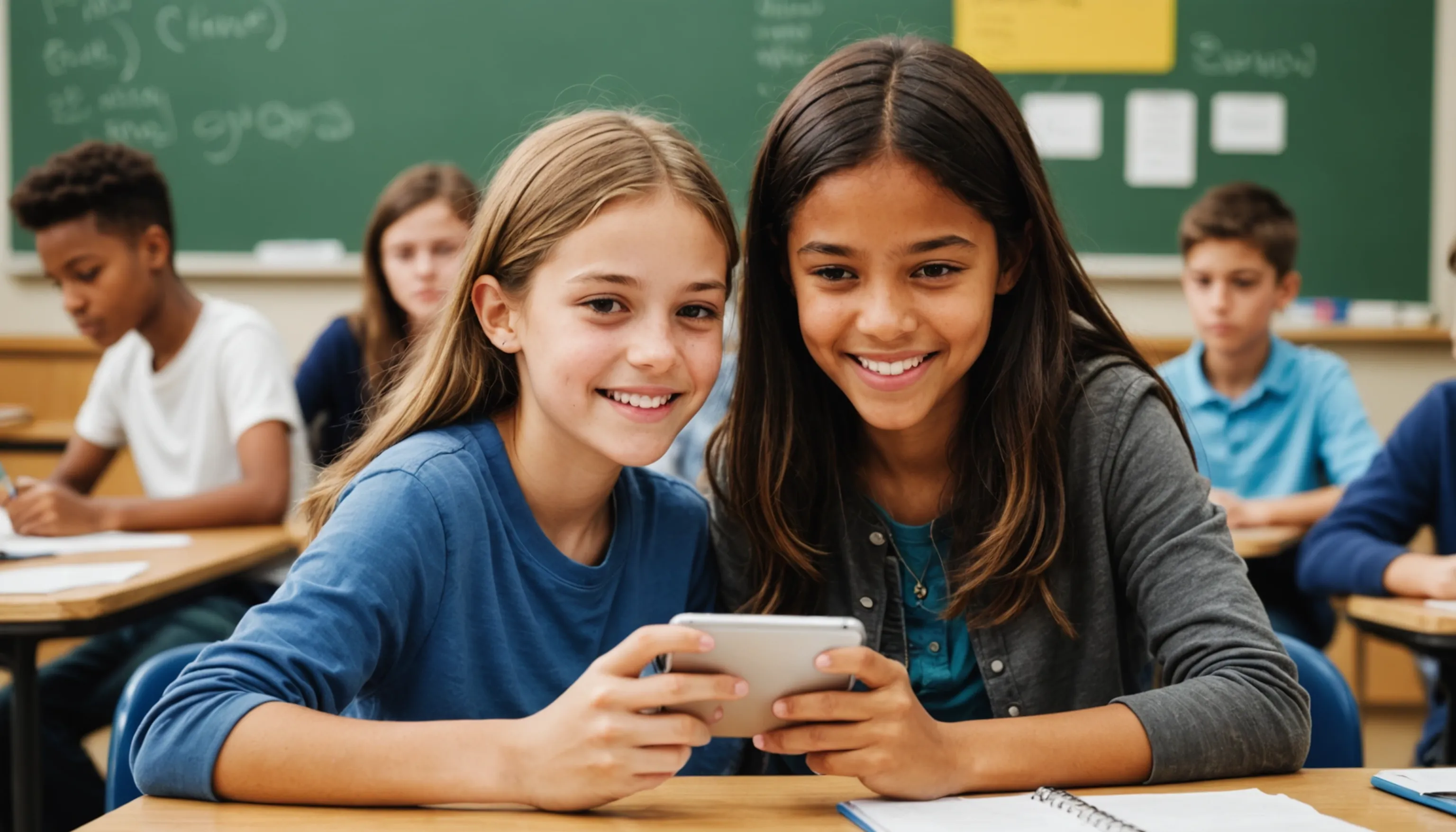EdTech to the Rescue for After-School Programs
 HvWHenry van Wagenberg
HvWHenry van Wagenberg
How EdTech Is Transforming After-School Programs
EdTech is fundamentally transforming after-school programs by providing innovative tools that enhance learning experiences. With the integration of technology, students can access a wealth of resources beyond traditional classroom settings. Programs now incorporate various digital platforms that facilitate personalized learning, enabling students to progress at their own pace.
Moreover, EdTech fosters engagement through interactive content, making learning more enjoyable. These technologies not only support academic growth but also encourage the development of essential skills such as critical thinking and collaboration. Overall, EdTech is reshaping after-school environments into dynamic spaces for exploration and growth.
The Benefits of EdTech in After-School Settings
The integration of EdTech in after-school settings offers numerous benefits that enhance the educational experience for students. Firstly, it provides access to a diverse range of resources and learning materials, allowing students to explore subjects beyond the standard curriculum. This access fosters a love for learning and encourages students to pursue their interests.
Another significant benefit is the promotion of personalized learning. With various EdTech tools, educators can tailor learning experiences to meet individual student needs, ensuring that each learner progresses at their own pace. This is particularly advantageous in after-school programs where students come with varying levels of understanding and skills.
Moreover, EdTech enhances engagement through interactive and gamified learning experiences. Students are more motivated to participate when they can interact with content, play educational games, or collaborate on projects using digital platforms. This increased engagement often leads to improved retention of information and a deeper understanding of the subject matter.
Additionally, EdTech fosters collaboration among students. Many digital tools enable group work, allowing students to communicate, share ideas, and work together on projects, thus developing their teamwork skills. Lastly, the use of EdTech can also help bridge the gap between home and school, as parents can stay informed about their child’s progress and activities through online platforms.

Popular EdTech Tools for After-School Learning
In the realm of after-school learning, several EdTech tools have gained popularity for their ability to enhance student engagement and facilitate effective learning. One of the most widely used tools is Google Classroom, which allows educators to create, distribute, and grade assignments in a streamlined manner. It promotes organization and communication between teachers and students.
Another favorite is Kahoot!, a game-based learning platform that transforms quizzes into interactive games. Students enjoy competing with their peers while reinforcing their understanding of various subjects. This sense of competition and fun encourages active participation and retention of information.
Nearpod is also gaining traction, offering interactive lessons that combine multimedia content with real-time assessments. This tool enables educators to gauge student understanding instantly and adjust their teaching strategies accordingly.
Edmodo is another platform that fosters collaboration among students and teachers. It acts like a social network for education, where students can ask questions, share resources, and engage in discussions outside of the classroom.
Additionally, Flipgrid has emerged as a powerful tool for student voice, allowing learners to create and share short videos on various topics. This encourages creativity and expression, making learning more dynamic.
These popular EdTech tools not only enrich after-school programs but also empower students to take control of their learning journey, making education more engaging and effective.
Engaging Students Through Digital Learning
Engaging students through digital learning has become essential in today's educational landscape. Digital tools provide interactive content that captivates students' attention and fosters active participation. By incorporating multimedia resources like videos, animations, and gamified activities, educators can create immersive learning experiences.
Moreover, platforms that allow for real-time feedback encourage students to take charge of their learning. These engaging methods not only enhance motivation but also help to develop critical thinking and problem-solving skills. Ultimately, leveraging digital learning ensures that students remain enthusiastic and invested in their educational journey.

Interactive Learning Platforms
Interactive learning platforms have revolutionized the way students engage with educational content, especially in after-school programs. These platforms create dynamic learning environments where students can actively participate, collaborate, and explore subjects in depth. One of the key advantages of interactive platforms is their ability to cater to different learning styles. For instance, visual learners benefit from multimedia presentations, while kinesthetic learners thrive with hands-on activities.
Platforms like Nearpod and Edpuzzle allow educators to create interactive lessons that integrate quizzes, polls, and videos, making the learning experience more engaging. Students can learn at their own pace, reviewing materials as needed, which promotes a deeper understanding of the subject matter.
Another example is Flipgrid, which encourages students to share their thoughts and ideas through short videos. This fosters a sense of community and allows for peer feedback, enhancing collaborative learning. Additionally, platforms like Quizlet offer interactive flashcards and games, making studying more enjoyable and effective.
Moreover, these platforms often provide analytics that help educators track student progress and identify areas for improvement. This data-driven approach enables tailored instruction that meets individual student needs.
In summary, interactive learning platforms not only make education more enjoyable but also empower students to take an active role in their learning process, leading to improved outcomes and a more enriching educational experience.
Gamification in Education
Gamification in education involves incorporating game-like elements into learning activities to enhance student engagement and motivation. This innovative approach transforms traditional educational experiences by making learning more enjoyable and interactive. By integrating elements such as points, badges, leaderboards, and challenges, educators can create a more stimulating environment that encourages students to actively participate in their learning journey.
One significant benefit of gamification is its ability to foster healthy competition among students. For instance, platforms like Kahoot! allow students to compete in quizzes, making the learning process fun and dynamic. This competition not only motivates students to perform better but also reinforces their understanding of the material.
Furthermore, gamification facilitates immediate feedback, allowing students to see their progress in real time. This instant recognition can boost their confidence and encourage them to tackle more challenging tasks. As students navigate through different levels of difficulty, they develop critical thinking and problem-solving skills.
Additionally, gamification promotes collaboration, as many games require teamwork and communication to achieve common goals. This collaborative aspect helps build social skills and enhances peer relationships, creating a sense of community among students.
In conclusion, gamification in education is a powerful tool that not only makes learning more enjoyable but also drives student engagement and academic success. By leveraging game mechanics, educators can inspire students to explore, learn, and grow in a stimulating and interactive environment.
Fostering Collaboration with EdTech
Fostering collaboration with EdTech tools is essential for enhancing teamwork among students in educational settings. Platforms like Google Workspace and Microsoft Teams enable students to work together on projects in real-time, regardless of their physical location. These tools allow for seamless communication, file sharing, and collaborative editing, promoting a sense of community.
Additionally, interactive platforms such as Padlet and Flipgrid encourage students to share ideas, provide feedback, and engage in discussions, further strengthening their collaborative skills. Ultimately, EdTech creates an environment where students learn to work effectively with others, preparing them for future teamwork in their careers.
Online Collaboration Tools
Online collaboration tools have become essential in educational settings, particularly in after-school programs, as they facilitate teamwork and communication among students and educators. These tools offer various features that promote effective collaboration, allowing students to work together seamlessly, regardless of their physical location.
One of the most popular online collaboration tools is Google Workspace, which includes applications like Google Docs, Sheets, and Slides. These tools enable multiple users to work on the same document simultaneously, making it easy for students to contribute their ideas and provide real-time feedback. This fosters a sense of ownership and responsibility as they collectively shape their projects.
Another effective tool is Microsoft Teams, which combines chat, video conferencing, and file sharing into one platform. Students can create channels for specific projects, share resources, and hold virtual meetings to discuss their progress. This level of organization enhances productivity and ensures that everyone stays on the same page.
Moreover, platforms like Trello and Asana help students manage tasks and deadlines collaboratively. By visualizing their workflow, students can prioritize tasks, assign responsibilities, and track their progress, which is crucial for successful group projects.
In conclusion, online collaboration tools not only enhance teamwork and communication among students but also equip them with essential skills for their future careers. By leveraging these tools, educators can create engaging and productive learning environments that promote collaboration and collective problem-solving.
Building Community in After-School Programs
Building a sense of community in after-school programs is vital for enhancing student engagement and promoting a positive learning environment. When students feel connected to their peers and instructors, they are more likely to participate actively and develop essential social skills. Here are several strategies to foster community within these programs:
- Encourage Group Activities: Incorporating team-building exercises and collaborative projects helps students bond and work together toward common goals.
- Create a Safe Space: Establishing an inclusive atmosphere where students feel comfortable expressing themselves is essential. This can be achieved by setting clear expectations for respect and communication.
- Organize Community Events: Hosting events such as family nights, talent shows, or community service projects allows students to showcase their talents and engage with their families.
Additionally, technology can play a significant role in building community:
- Utilize Online Platforms: Tools like Edmodo or ClassDojo can facilitate communication between students, parents, and instructors, keeping everyone informed and connected.
- Promote Peer Mentoring: Pairing older students with younger ones fosters relationships and encourages skill sharing, further strengthening the community.
In summary, building community in after-school programs is crucial for student success. By implementing these strategies, educators can create a supportive environment where students feel valued, engaged, and connected.
